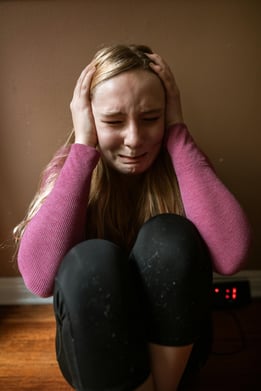How to Identify the Early Signs of Anxiety and Depression
How to Identify the Early Signs of Anxiety and Depression. Learn to recognize the early signs of anxiety and depression based on scientific evidence.
Health Is Life
1/22/20252 min read
Anxiety and depression are increasingly common mental health conditions affecting millions of people worldwide. Recognizing the initial signs is essential to seeking help and preventing these disorders from worsening. Below are the main signs and factors that may contribute to anxiety and depression, as well as what to do if you or someone close to you experiences these symptoms.
Main Signs of Anxiety:
Excessive Worry: Persistent thoughts about everyday situations.
Muscle Tension: Constant feeling of being physically "tense."
Irritability: Low tolerance for minor inconveniences.
Sleep Problems: Difficulty falling or staying asleep.
Fatigue: Feeling tired even without significant physical effort.
Physical Symptoms: Palpitations, excessive sweating, trembling, and abdominal discomfort.
Main Signs of Depression:
Persistent Sadness: Constant feelings of emptiness or hopelessness.
Loss of Interest: Lack of motivation for previously enjoyable activities.
Appetite Changes: Significant increase or loss of appetite.
Social Isolation: Preference for avoiding interactions with friends and family.
Difficulty Concentrating: Trouble focusing on tasks or making decisions.
Self-Destructive Thoughts: Recurring ideas of worthlessness or desire to give up on life.
What Can Trigger Anxiety and Depression?
Chronic Stress: Prolonged exposure to stress at work, school, or personal life.
Traumatic Events: Experiences such as abuse, loss of a loved one, or accidents.
Genetic Predisposition: Family history of anxiety or depression.
Chemical Imbalances: Irregularities in neurotransmitters like serotonin and dopamine.
Substance Abuse: Excessive alcohol or drug use can increase vulnerability.
Social Factors: Isolation, bullying, or lack of social support.
What to Do?
If you identify these symptoms, it is important not to ignore them. Talk to a mental health professional, such as a psychologist or psychiatrist. Lifestyle changes, including regular physical activity, a balanced diet, and relaxation techniques, can also help. Relying on friends and family for support makes a significant difference.
Recognizing and acting early can make all the difference. Take care of yourself and those around you!
Scientific Evidence:
Anxiety and Physical Symptoms: A study published in the Journal of Anxiety Disorders (2021) highlights that physical symptoms such as palpitations and muscle tension are frequently associated with anxiety disorders.
Persistent Sadness in Depression: According to the World Health Organization (WHO), depression is one of the leading causes of disability worldwide, with core symptoms including prolonged sadness and loss of interest.
Early Interventions: Research from the American Psychological Association (APA) shows that early treatment of anxiety and depression, especially through cognitive-behavioral therapy (CBT), significantly reduces symptoms in the long term.
Exercise and Mental Health: A 2020 study in Frontiers in Psychiatry confirms that regular physical activity reduces anxiety and depression symptoms by 20%.


